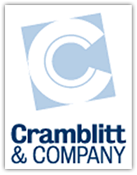5 baby steps to getting social
December 7th, 2009 | Comments Off on 5 baby steps to getting social
Sometimes the hardest thing is just getting started. Objections are easy to come by, and big change seems insurmountable.
Maybe like the multiphobic Bob Wiley (Bill Murray) in the movie “What About Bob,” you should consider taking baby steps. Here are five you can take to get involved with social media and lay the groundwork for establishing a community around your products and services.
1. Establish or participate in LinkedIn groups that share information about your industry. Initiate intelligent discussions and add constructive commentary on others’ discussion topics to solidify your credentials and expertise. Provide special free offers that are valuable to group participants and provide an ancillary benefit of promoting your product or service. But, whatever you do, don’t pander.
2. Participate in forums. Provide information and initiate discussion on topics related to your company’s products or services.
3. Get on twitter to monitor discussion about your company and the industry it serves, and to develop followers to whom you can provide information and perspectives.
4. Start a blog on your web site and contribute to it regularly — at least twice a month, but preferably once a week. If you don’t know how to do it, bring in a journalist to help you. Topics: technical information on your products or services, profiles of customers, industry perspectives or opinions, surveys, open-ended inquiries of readers, guest blogs by partners, video tutorials, research results — there are tons of resources within your company waiting to be harvested.
5. Take the information that you regularly use for press releases, case studies, white papers, and support documents and consolidate it into a permission-based e-newsletter. Add surveys or forums to encourage interaction with readers. Six times a year is a good frequency. This will set up a direct link to your customers for sharing information and collecting feedback. Remember that the information has to be valuable to and welcomed by recipients.
These five steps will begin establishing a conversation with customers and potential customers, creating a sharing relationship rather than a vendor dictatorship. The ultimate goal is to begin establishing a community around your products and services — more on that soon.

